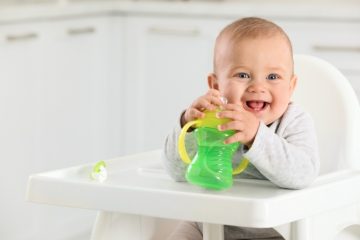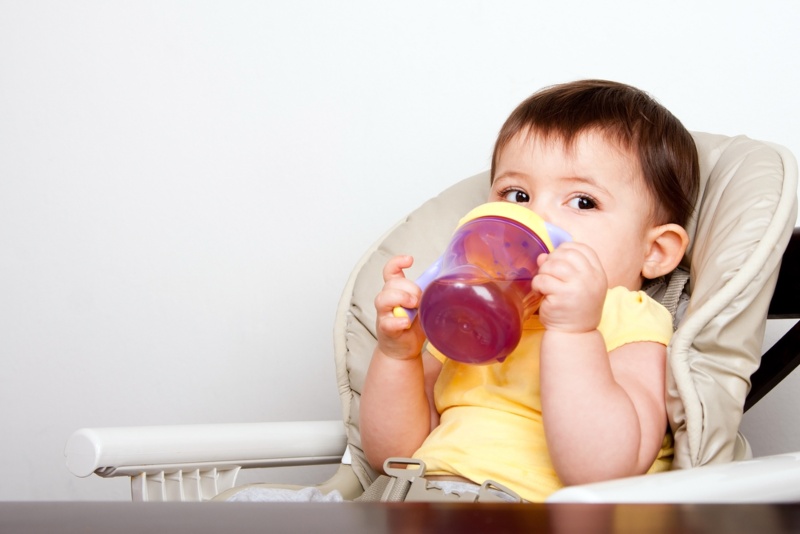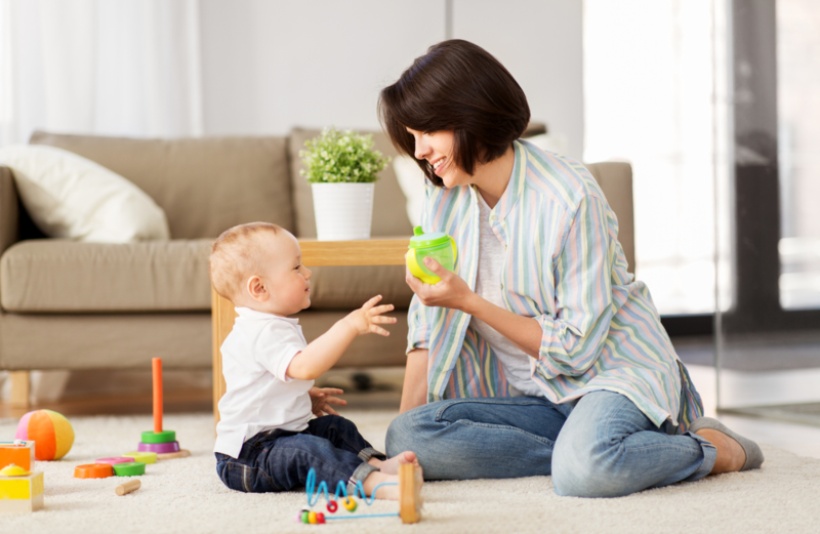
One of the many things any parent must be conscious of is their little toddler’s nutrition. Babies must consume highly nutritious meals and drinks to ensure optimal health and development. But parents and guardians must not only worry about what they feed their little ones but also consider how their children eat.
Unsurprisingly, many first-time parents have dozens of questions regarding their children’s eating habits, resulting in popular search queries such as “when to stop bottle feeding my child” or “when to introduce sippy cup to my baby”.
Some parents may even be skeptical about moving from bottles to cups. They might think, “why is there a need to transition anyway?” Before introducing you to sippy cups, let’s learn how prolonged bottle feeding can affect your child’s development.
Bidding Bottles Goodbye
Besides baby clothes, bibs, and towels, we bet baby bottles are the next most popular gift you will receive during your baby shower. Considering how much our society associates the image of a bottle with babies, it’s only natural that bottles are one of the first baby essentials you’ll receive.
You can’t deny that bottles are lifesavers for some parents. They are convenient for mommies who cannot breastfeed, perfect for monitoring and regulating your child’s intake, and flexible for busy parents. However, everything must finish at some point, and bottle feeding can’t escape that.
Prolonged use of bottles during mealtimes can be harmful to your baby’s growth and health. Several studies have shown how extended bottle usage leads to various medical and dental issues.
One of these issues is tooth decay. It is such a prevalent phenomenon in infants that experts even penned a specific name for it: baby bottle tooth decay. When babies suck on their bottles, the sugars and acids in milk and juice tend to stick and accumulate on their teeth, causing unsightly and painful cavities.
Frequent and lengthy bottle sucking can also interfere with proper tooth growth and position. Your toddler’s teeth may grow around the shape of their bottle’s nozzle if they continue to use bottles throughout their childhood.
The development of the palate, tongue, lips, jaw, and other facial muscles is also at risk. Not only are these parts important for feeding, but they are also crucial for speech production and development. Extended use of bottles may lead to various speech problems and difficulties.
Possible deterioration of the mouth area and stunted speech development are the primary reasons infants must stop drinking their milk from bottles and start using an open cup. But switching bottles to cups won’t be as simple as ABC.
Of course, your baby needs some help along the way. This can come in the form of sippy cups during their mealtimes.

Taking the First Sip: A First Taste of Sippy Cups
Because they’ve been sucking on bottles and pacifiers all their lives or are so used to breastfeeding, babies won’t be able to drink from open cups immediately. There will be unease, resistance, and tons of spills.
Parents must slowly wean their babies off of bottles and introduce them to open cups with the help of sippy cups. Sippy cups are training cups with spouts or straws used to prevent spills. Most sippy cup designs have handles, but you can also buy ones without them.
Introducing your child to sippy cups will help them learn how to drink without a bottle’s nipple and familiarize themselves instead with sipping from a spout or straw. Sippy cups prepare your baby’s mouth muscles for gradually transitioning to drinking out of regular cups.
You can choose which type of sippy cup suits your infant:
- Hard spout – The spout on these cups is made from hard plastic, protecting the drinking piece from damage. Your child must turn up the hard spout to drink.
- Soft spout – These cups have flexible and bendy spouts made of silicone or soft plastic. Your baby must turn the spout up to drink from this sippy cup.
- No spout – This sippy cup resembles a regular cup with a lid. Because it does not have a spout, your baby must tip their head back as they drink to let the liquid out.
- Straw – Indicative in its name, this type of sippy cup has a straw instead of a spout. Your toddler must sip from the straw to drink.
- Valved – Cups with valves are spill-proof sippy cups. However, your child must suck on the spout to drink instead of sipping.
- No valve – Unlike valved cups, sippy cups with no valves allow the liquid to flow freely. Instead of sucking, your baby can sip on the straw on this cup to drink.
Why Should My Child Use Them?
Besides helping with the transition, sippy cups are a great way to let your child develop and practice proper hand-to-mouth coordination. With sippy cups, your toddler will learn how to bring their cup to their mouth without spilling instead of having you assist them, as with bottle feeding.
Sippy cups also enforce and spark independence in your child during their mealtimes. Babies will learn how and when to drink from their cups when thirsty.
When Do Babies Use Sippy Cups?
You already know how harmful extended bottle use can be and how important it is to wean your child off of bottles with sippy cups. The subsequent logical question is: when do babies start using sippy cups?
Experts say babies can already begin taking small sips from open cups at six months. By their first year, they must already be drinking from cups without spilling. That means you must gradually transition during the six-month in-between period and start practicing your little one on sippy cups.
You can introduce sippy cups to your child when they:
- Start consuming solid foods.
- Can sit up on their own (this signifies good neck support).
- Begin reaching for their cup because of interest.
During the start of the transition, gradually introduce a sippy cup to your child by placing it near them during mealtimes. If you’re feeling creative enough, you can decorate their sippy cup to catch their attention. You can also start removing their bottles out of sight one by one.
Avoid filling their sippy cup immediately to the brim. Put only a few ounces of water initially before gradually increasing the amount. You can also place pumped breast milk and formula in their cup.
Teach them how to drink and sip by showing them how to raise their cup to their mouth. Always observe and supervise them as they drink to ensure they use their cup safely and correctly.
If your baby refuses to drink out of their sippy cup, you can try placing another beverage instead of milk. However, it’s best to stick with either milk or water. A sippy cup filled with overly sweet juices and carbonated sodas isn’t the best look, is it?
Additionally, ensure that the cup’s spout or straw is working correctly. If they still won’t use their sippy cup, perhaps it’s time to switch to open cups.
Choosing the Right Sippy Cup
Learning how valuable and convenient sippy cups are may tempt you to head to the nearest baby store and grab the first sippy cup you will find. However, you must take several factors and features into account first before buying your child’s cup.
To pick the best sippy cup for your little one, consider the following:
- Weighted cups – If you’re looking for a sturdy cup, one of your best bets is a weighted sippy cup. Being heavy at the bottom prevents the sippy cup from easily tipping and falling over.
- Cup material – Because the sippy cup’s spout or straw enters your child’s mouth, you must be wary of what the cup is made of. When choosing a cup, ensure that it is not manufactured with any harmful materials, such as phthalates and bisphenol-A.
- Cups with handles – As mentioned, there are sippy cup designs with handles and some with none. It’s entirely up to you and your baby to decide whether or not sippy cups with handles are best. However, it’s worth noting that handles will make gripping the sippy cup easier.

Bottoms Up: Let Your Toddler Sip Safely With Ashtonbee!
Bottles are undeniably essential in your child’s life, but your little one must eventually outgrow them. Sippy cups help your tiny toddler slowly transition from bottles to open cups with ease. A sippy cup guarantees that your baby will drink out of an open cup in no time.
Already window shopping at your local stores and scouring the internet for sippy cup designs? You won’t have to tire yourself out searching for the best sippy cups with Ashtonbee!
Made with food-grade silicone and free from harmful materials like BPA, lead, phthalates, and PVC, Ashtonbee’s 5-pack silicone sippy cup lids ensure that your child sips on their cup safely. These sippy cup lids are flexible and lightweight, making them easy to clean and carry on the go.
Browse through our baby essentials selection and check off everything on your must-have list with Ashtonbee!



